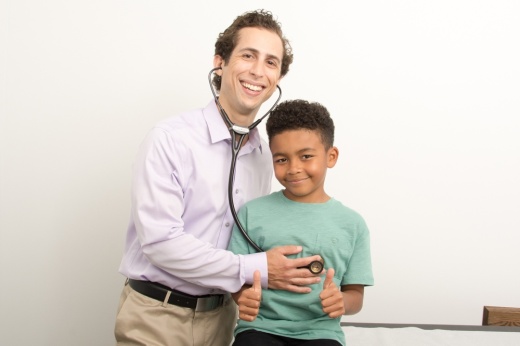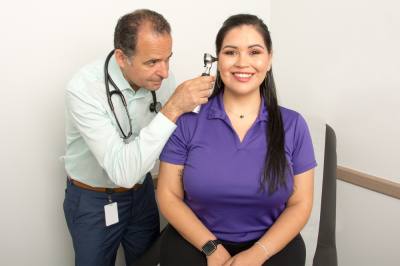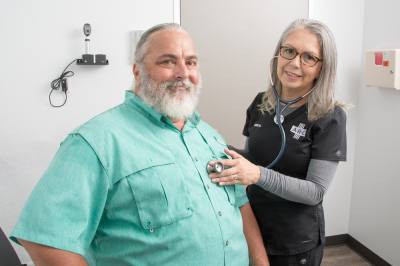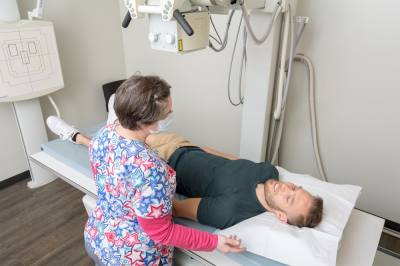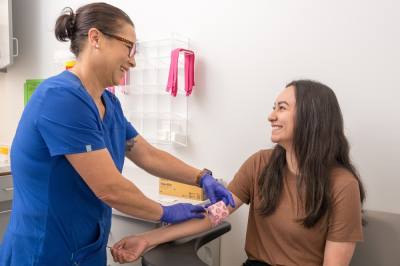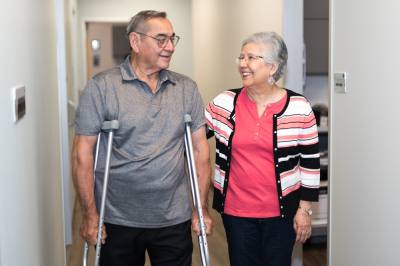Austin Regional Clinic is one of the many options patients have when trying to decide where to go for most non-life threatening instances. By being aware of the differences between urgent care facilities, including cost, treatments and staffing, patients are able to make more informed decisions when it comes to their care.
Different types of urgent care clinics
- Major emergencies normally require visits to hospital-based emergency departments and free-standing emergency departments, staffed by physicians at all times and often with additional advanced practice clinicians. Costs can vary, but can be upwards of $1,000.
- For non-emergencies, free-standing urgent care clinics, which can be found almost anywhere, are typically staffed with advanced practice clinicians and physicians, and provide X Rays and lab services. Cost is typically $150-$350 and upwards.
- Clinic-based facilities providing urgent care services, which is what ARC falls under, offer the lower cost of a minor retail clinic and the services of a freestanding urgent clinic. ARC urgent care services are staffed with physicians and advanced practice clinicians at some locations. Cost can be as low as a basic $25 insurance primary care co-pay. ARC also welcomes uninsured patients and offers a cash discount when paid in full at the time of service.
- Finally, there are minor clinics, such as a CVS Minute Clinic, which are most often staffed by advanced practice clinicians. Cost is more affordable at $35-$250, but has limited lab testing abilities, no imaging services and limited medications on site.
How to identify which to go to
In the moment when someone is having an emergency, it can be easy to panic and want to take them immediately to the ER. However, Dr. Gibson said there are definitive moments when a patient should be taken to the ER and not one of the other kinds of clinics.
When to go to the ER:
- When a patient is having substantial chest pain
- When a patient is experiencing stroke symptoms
- When a patient experiences trauma, such as gunshot wounds or bone fractures where surgery is necessary
- When a patient encounters head injuries that deal with a significant loss of consciousness
- When a patient starts having shortness of breath, especially when they have pre-existing severe health issues
- When a patient is experiencing severe abdominal pain
- When a patient has pregnancy-related emergencies
“COVID-19 has been a perfect example of what happens when we get clogged up in the system. Many people who have respiratory illnesses do not need to be in a hospital, but by going to the ER, people with more severe symptoms or developing complications from COVID may be left in the waiting room and they may not get the care they need in a timely fashion,” Dr. Gibson said. “The ER cannot expand. It can't suddenly grow more capacity. That's why it's critical that we consider all the other options in the community before going to a hospital emergency room with a non-emergency health issue.”
How ARC can help
Currently, ARC offers two options to help accommodate patients. The first is their daytime urgent care, which was introduced as a way to help create easy access during the day for patients. From 8 a.m. to 5 p.m. Monday through Friday, ARC primary care clinics across Central Texas have some same-day availability, and five clinics are staffed with providers who solely conduct same-day visits.
“Our job is to support our primary care doctors and be their extension for an illness when their patient can't get in to see them,” Dr. Gibson said.
The other option is ARC’s five After Hours Clinics, which are open seven days a week, 365 days a year, 5:30-9 p.m. on weekdays, 8 a.m.-5 p.m. on weekends and on all holidays. Not only do After Hours Clinics provide access to people who aren’t able to come during the day or during the week, but they also offer continuity. When an ARC patient walks in the door, ARC has access to all of their medical records and also has access to specialists that other clinics may not have.
“I have access to the full chart. I know exactly what medications they're on. I know what health problems they have. I know what allergies they have,” Dr. Gibson said. “I also have access to all of our specialists. At the touch of my fingers, I can communicate directly with a patient’s other ARC providers, if needed, to offer a higher level of care and continuity.”
As an added benefit to the community, ARC Same-Day and After Hours Clinic visits are open to everyone, not just established ARC patients.
ARC also offers an on demand urgent care tele-health service, called NormanMD. This is an additional service that can be joined with or without insurance. NormanMD is an affordable option for non-emergency acute problems. NormanMD is staffed by ARC physicians with both pediatricians and adult medicine physicians available for a virtual visit 24/7.
To learn more about Austin Regional Clinic, visit its website.
The above story was produced by Community Impact's Storytelling Senior Multi-Platform Journalist Sierra Rozen with information solely provided by the local business as part of their "sponsored content" purchase through our advertising team.




